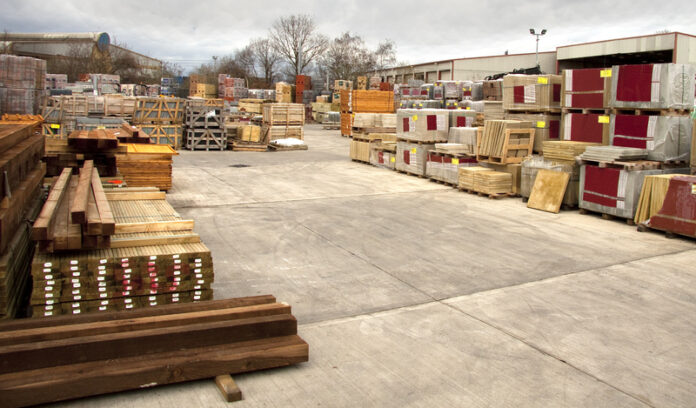
When undertaking a construction project, effective planning and budgeting are crucial for managing costs. Thoroughly understanding your project’s requirements and budget constraints helps in identifying where you can afford to spend and where you need to save on lumber and building supplies. Planning also allows you to foresee potential cost overruns and provides a clearer path to sourcing affordable construction supplies. A well-detailed plan serves as a roadmap, guiding your purchasing decisions and helping to avoid impulsive buying that can lead to unnecessary expenditures.
Setting realistic expectations for construction costs is another fundamental aspect of cost control. This includes being informed about the current lumber price and the costs of other materials you will need. Often, people underestimate the cost of buying building materials, which leads to budget overflows and project delays. By researching the average costs and consulting with professionals, you can set a more accurate budget that reflects true market conditions. It’s crucial to incorporate a buffer for unforeseen expenses, ensuring that your project can proceed smoothly despite potential financial hiccups.
Timing Your Purchases Wisely
Identifying Off-Peak Seasons for Best Prices
One of the most effective strategies for obtaining the best prices on lumber and building supplies is to purchase during off-peak seasons. For many building materials, prices can fluctuate depending on the time of year. Typically, demand for lumber and building supplies decreases during the winter months, which can lead to lower prices. Planning your purchases to coincide with these times can result in significant savings. Being aware of these cycles and preparing to buy when demand is low not only ensures affordable construction supplies but also better availability.
Utilizing Seasonal and Clearance Sales
Retailers and suppliers often have seasonal sales and clearances to make room for new stock or to clear out old inventory. These sales are perfect opportunities to find discount building materials. It’s beneficial to subscribe to newsletters from your preferred suppliers or to regularly check their websites to stay informed about upcoming sales. Additionally, end-of-year clearance events can be an ideal time to purchase materials at a reduced cost, helping to keep your project within budget.
Monitoring Market Trends for Optimal Buying Times
Keeping an eye on market trends is crucial for timing your purchases to get the best deals on materials. The lumber price, for example, can be highly volatile, influenced by factors such as trade policies, economic conditions, and natural events like wildfires or hurricanes. By monitoring these trends, you can anticipate changes in prices and plan your purchases accordingly. This proactive approach allows you to buy concrete online and other materials when prices are at their most favorable.
Timing Large Purchases with Store Discounts
For larger projects that require substantial quantities of materials, timing your purchases with store discounts can lead to huge cost savings. Many big box stores and local suppliers offer annual discounts, bulk purchase deals, or loyalty programs that can be leveraged to reduce costs significantly. Planning your project timeline to align with these discounts can optimize your expenditure on cost-effective building materials. It’s also worth discussing potential upcoming sales with store managers, as they might provide insights into the best times to make large purchases.
Exploring Affordable Supplier Options
Finding Specialized Discount Building Suppliers
To significantly reduce construction costs, consider sourcing your materials from specialized discount building materials suppliers. These suppliers focus on offering competitive prices and often have a wide range of stock that includes overruns, last-season items, or products with minor imperfections that do not affect their usability. By establishing relationships with these suppliers, you can access ongoing discounts and insider deals that are not available to the general public. These partnerships can be particularly beneficial for repeated purchases or large-scale projects.
Comparing Online vs. Local Store Prices
When considering where to purchase lumber and building supplies, it’s important to weigh the advantages and disadvantages of buying from online platforms versus local stores. Each option presents unique benefits that can impact the overall cost and convenience of acquiring materials like concrete.
- Price Comparison: Online retailers often offer lower prices due to reduced overhead costs compared to brick-and-mortar stores.
- Selection: Online platforms typically provide a broader selection of budget-friendly home-building supplies, allowing for more choices and comparison options.
- Shipping Costs: Local stores have the advantage of no shipping costs, which can be a significant factor, especially for heavy materials like concrete.
- Availability: Local stores offer immediate availability of materials, crucial for urgent project needs or quick replacements.
- Project Needs and Timelines: The decision should be based on specific project needs and timelines, as each option has its strengths depending on the urgency and volume of materials needed.
Choosing where to purchase your building supplies involves more than just looking at the price tag. Consider all aspects of your project, including how quickly you need supplies and whether potential shipping costs could offset any savings from online purchases. By carefully evaluating these factors, you can ensure you make the most cost-effective and practical decision for your construction needs.
Benefits of Using Overstock and Liquidation Centers
Overstock and liquidation centers are excellent sources for finding discounts on building materials. These centers purchase surplus goods and sell them at considerably reduced prices. Shopping at these centers can be unpredictable in terms of inventory, but the potential savings make it worth the effort. They often carry high-quality materials from well-known manufacturers, allowing you to purchase cost-effective building materials without compromising on quality.
Leveraging Auctions and Estate Sales
Auctions and estate sales can be unexpected goldmines for affordable lumber and building supplies. These events may feature materials from unfinished projects, excess inventory from builders, or assets from liquidated companies. Prices can be significantly lower than retail, especially if there is limited interest in the items you need. To make the most of auctions and estate sales, it’s important to have a flexible shopping list and be prepared to act quickly when opportunities arise.
Buying Strategies for Lower Costs
The Benefits of Bulk Purchasing
Bulk purchasing is a strategic approach that can lead to significant savings when acquiring construction materials. By buying in large quantities, you often receive a lower unit price, which is especially beneficial for extensive projects or when stocking up on commonly used supplies like lumber and concrete. Suppliers are usually willing to negotiate better terms and discounts for bulk orders, which can help stretch your budget further. Additionally, bulk buying reduces the frequency of purchase orders, saving on administrative and delivery costs over time.
Negotiating Prices with Suppliers
Negotiating with suppliers is a crucial skill that can directly impact your project’s cost efficiency. Don’t hesitate to discuss pricing options for lumber and building supplies, especially when placing large orders or being a repeat customer. Suppliers are often open to negotiations to secure a sale or establish a long-term relationship. Tactics such as price matching, requesting trade discounts, or simply asking for a better deal can be effective. Always come prepared with market research and competitor prices to strengthen your negotiating position.
Group Buying with Other Builders and Developers
Group buying is an excellent strategy for achieving lower prices on building materials. By teaming up with other builders and developers, you can increase your purchasing power and negotiate better deals with suppliers. This collaborative approach not only leads to cost reductions but can also improve terms such as delivery schedules and after-sale services. Group buying is particularly effective for smaller contractors or independent builders who might otherwise be unable to negotiate more favorable terms on their own.
Subscribing to Supplier Newsletters for Deals
Staying informed about promotions, special offers, and exclusive deals is easier when you subscribe to supplier newsletters. These newsletters often announce upcoming sales, clearance events, or special discount periods first to their subscribers. By keeping an eye on these updates, you can plan your purchases around these deals, further reducing the cost of materials like buying concrete online or saving on lumber. Regular updates can also help you maintain a good relationship with suppliers, potentially leading to more personalized deals based on your buying history.
Utilizing Reclaimed and Recycled Materials
Where to Find Reclaimed Lumber and Supplies
Reclaimed lumber and building supplies can be sourced from various places, offering a sustainable and cost-effective alternative for your projects. Specialty salvage yards, online marketplaces, and local demolition sites are common places where you can find high-quality reclaimed materials. These sources often list items like old barn wood, vintage bricks, and used structural beams that add unique character and history to your builds. Additionally, connecting with local contractors who may be looking to offload materials from past projects can provide another avenue to acquire these items.
Assessing the Quality and Usability of Recycled Materials
When considering recycled or reclaimed materials, it’s crucial to assess their quality and usability for your specific project needs. Check for signs of damage such as cracks, rot, or excessive warping which might affect structural integrity. It’s also important to verify that the materials meet the necessary safety and building standards before use. Engaging an expert to evaluate the materials can ensure that they are not only aesthetically pleasing but also structurally sound and safe for use in your construction projects.
Cost Benefits of Using Recycled and Reclaimed Items
Utilizing recycled and reclaimed materials in construction projects is not only an environmentally responsible choice but also offers considerable financial benefits. Here’s how integrating these materials can be economically advantageous:
- Lower Purchase Costs: Recycled and reclaimed materials are typically available at a fraction of the cost of new materials, making them an excellent option for reducing project expenses.
- Increased Property Value: The unique aesthetic and character of reclaimed materials can enhance the appeal and distinctiveness of a property, potentially increasing its market value.
- Reduced Waste Management Costs: By using materials that might otherwise end up in landfills, you lower the costs associated with waste disposal and management.
- Conservation of Resources: Utilizing reclaimed materials reduces the demand for new resources, which can translate into savings related to raw material procurement.
- Eligibility for Grants and Incentives: Projects that incorporate sustainable practices, including the use of recycled materials, may qualify for environmental grants or tax incentives, further reducing overall costs.
Opting for recycled and reclaimed building materials also has a profound environmental impact. By reusing lumber and building supplies, you help reduce landfill waste and decrease the energy consumption typically associated with manufacturing new building products. This choice supports a circular economy where resources are reused and repurposed rather than discarded. Additionally, by reducing the need for new raw materials, you contribute to conserving natural resources and minimizing the carbon footprint of your building projects. Such sustainable practices not only benefit the environment but can also enhance the green credentials of your business or project.
Effectively managing construction costs while maintaining high standards of quality is entirely feasible with the right strategies and resources. By timing your purchases wisely, exploring affordable supplier options, employing strategic buying tactics, and opting for reclaimed and recycled materials, you can achieve substantial savings without compromising on the essentials of your construction project. Each approach from monitoring market trends to negotiating with suppliers, and embracing sustainable materials plays a pivotal role in reducing expenses and enhancing the value of your endeavors.
Find a Home-Based Business to Start-Up >>> Hundreds of Business Listings.
















































